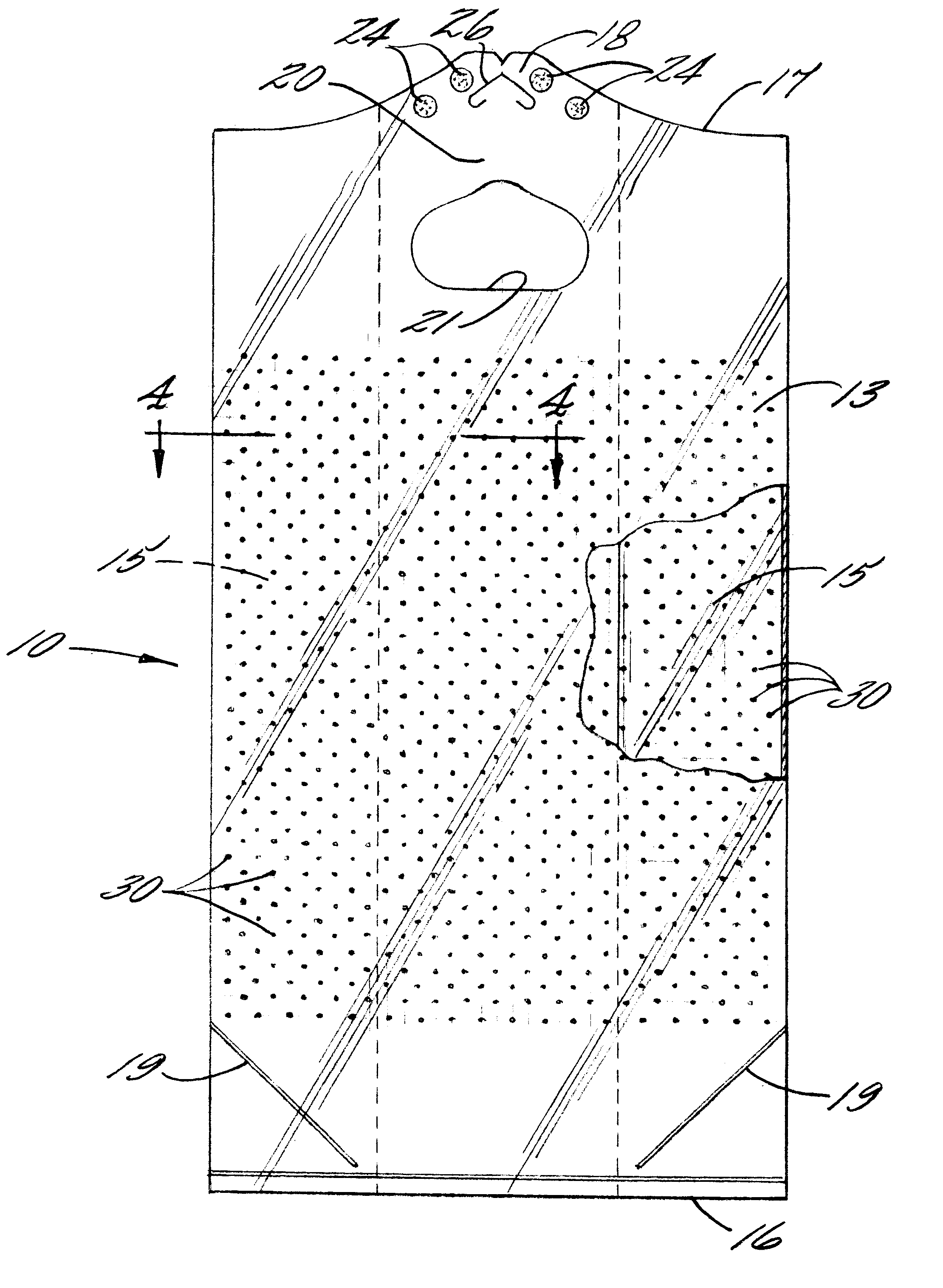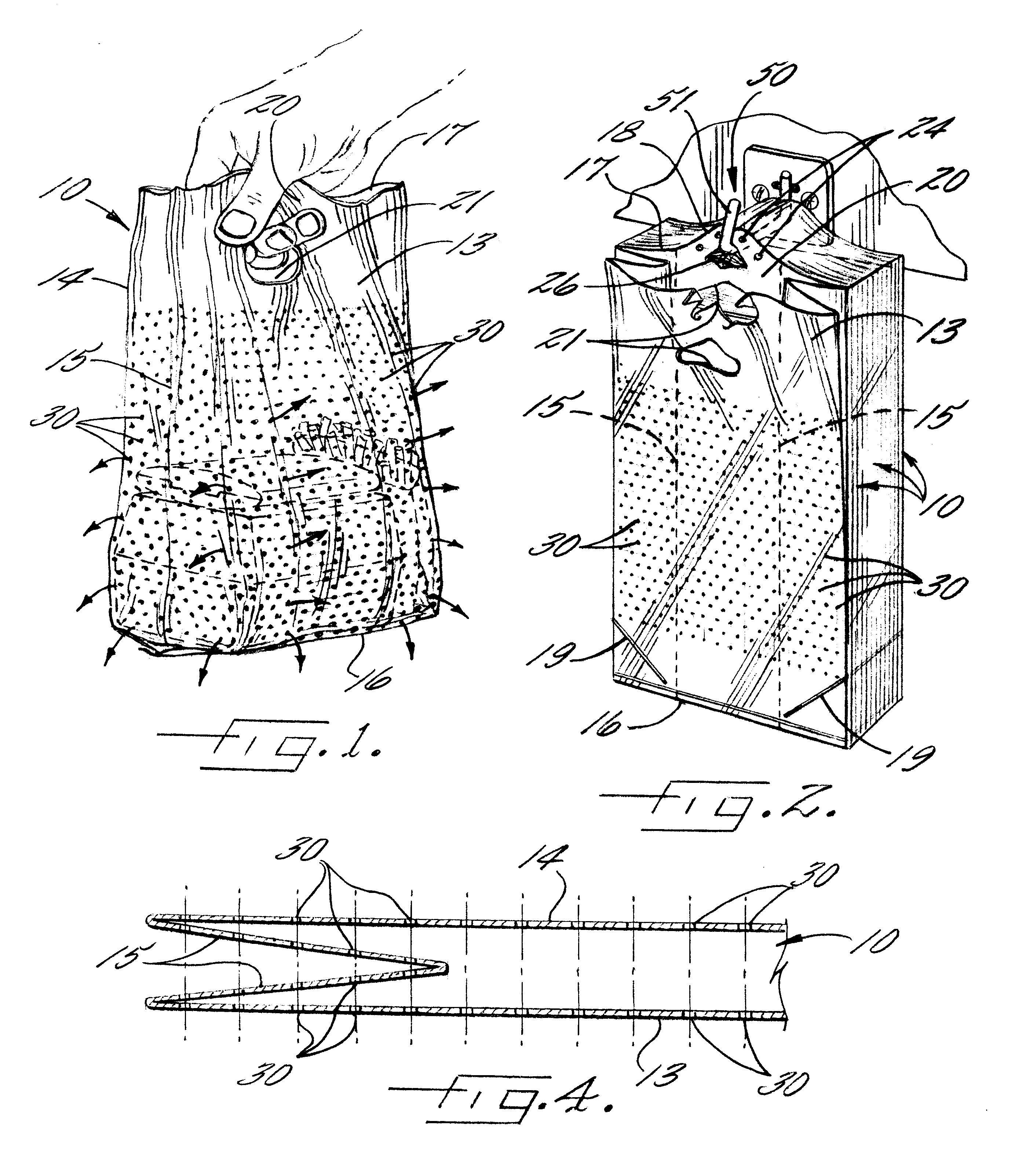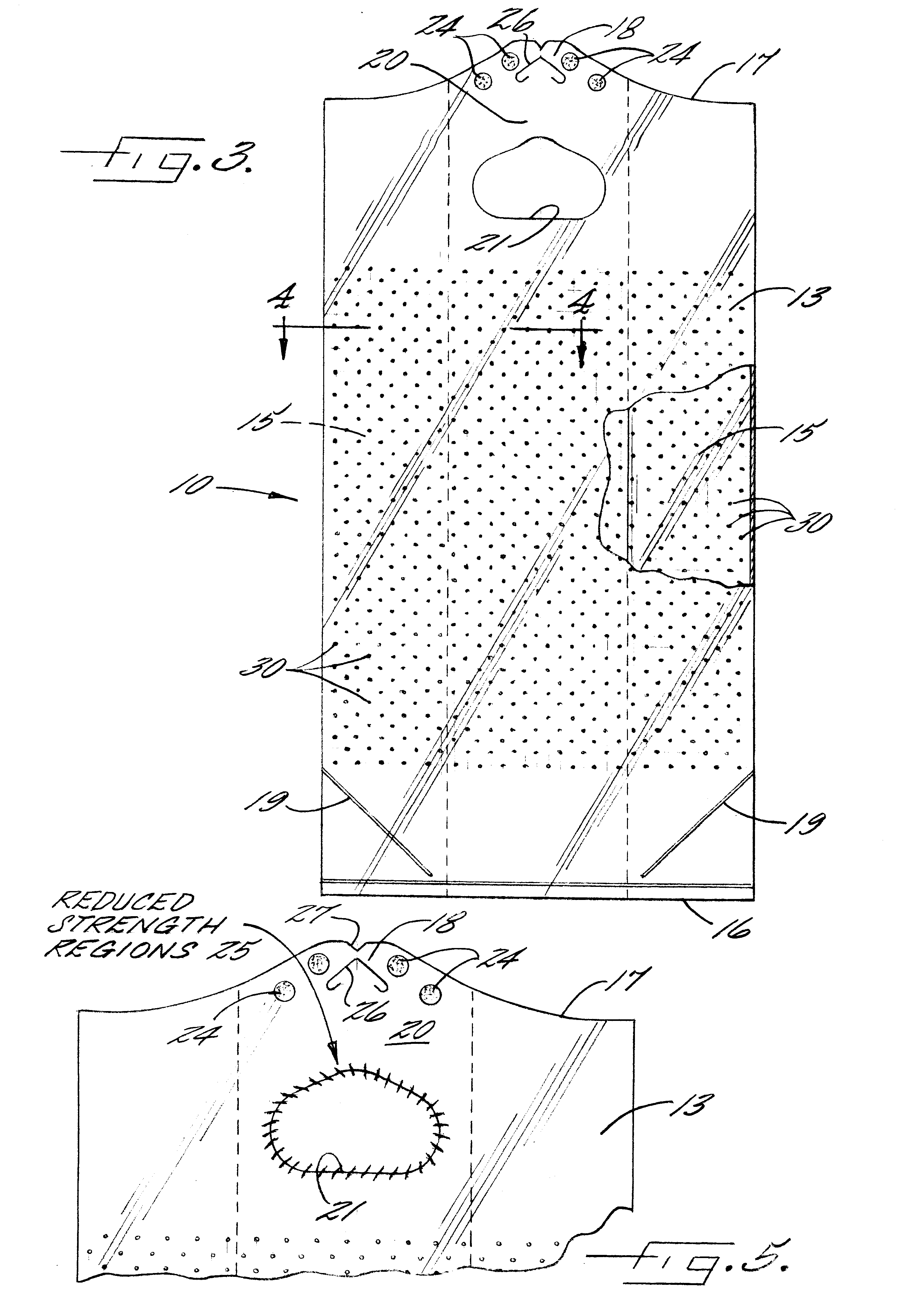Ventilated plastic bag
a technology of ventilated plastic bags and bags, which is applied in the direction of domestic cooling devices, transportation and packaging, lighting and heating devices, etc., can solve the problems of greater tear propagation and provide problems in the use of bags, and achieve the effect of strengthening corona and pressure bonding
- Summary
- Abstract
- Description
- Claims
- Application Information
AI Technical Summary
Benefits of technology
Problems solved by technology
Method used
Image
Examples
first embodiment
FIG. 1 is a perspective view of a ventilated plastic bag constructed in accordance with this invention, loaded with hot food from a fast food restaurant and being carried at a handle section by a user;
FIG. 2 is a perspective view of a pack of the plastic bags of the first embodiment of FIG. 1 and having a first pattern of closely spaced micro-perforations and being mounted on a rack for removal by a user and filling with hot food from a fast food restaurant;
FIG. 3 is an enlarged front elevational view, partially broken away, of one of the plastic bags of the first embodiment illustrated in FIG. 2;
FIG. 4 is a sectional view through the plastic bag of the first embodiment of FIG. 3 and taken generally along the line 4--4 of FIG. 3;
FIG. 5 is an enlarged front elevational view of the top area of the first embodiment of ventilated plastic bag of FIG. 3 and schematically illustrating reduced strength regions created by the cut out of the front and rear wall sections to create a handle mea...
second embodiment
FIG. 9 is a front elevational view of a ventilated plastic bag of the T-shirt type construction and having the first pattern of closely spaced micro-perforations;
FIG. 10 is a perspective view of a pack of the bags of FIG. 9 mounted on a dispensing rack; and
FIG. 11 is a view like FIG. 10 illustrating a first bag being opened on said rack for filling by a user and subsequent removal for serially opening the next bags in the pack on the rack.
PUM
 Login to View More
Login to View More Abstract
Description
Claims
Application Information
 Login to View More
Login to View More - R&D
- Intellectual Property
- Life Sciences
- Materials
- Tech Scout
- Unparalleled Data Quality
- Higher Quality Content
- 60% Fewer Hallucinations
Browse by: Latest US Patents, China's latest patents, Technical Efficacy Thesaurus, Application Domain, Technology Topic, Popular Technical Reports.
© 2025 PatSnap. All rights reserved.Legal|Privacy policy|Modern Slavery Act Transparency Statement|Sitemap|About US| Contact US: help@patsnap.com



